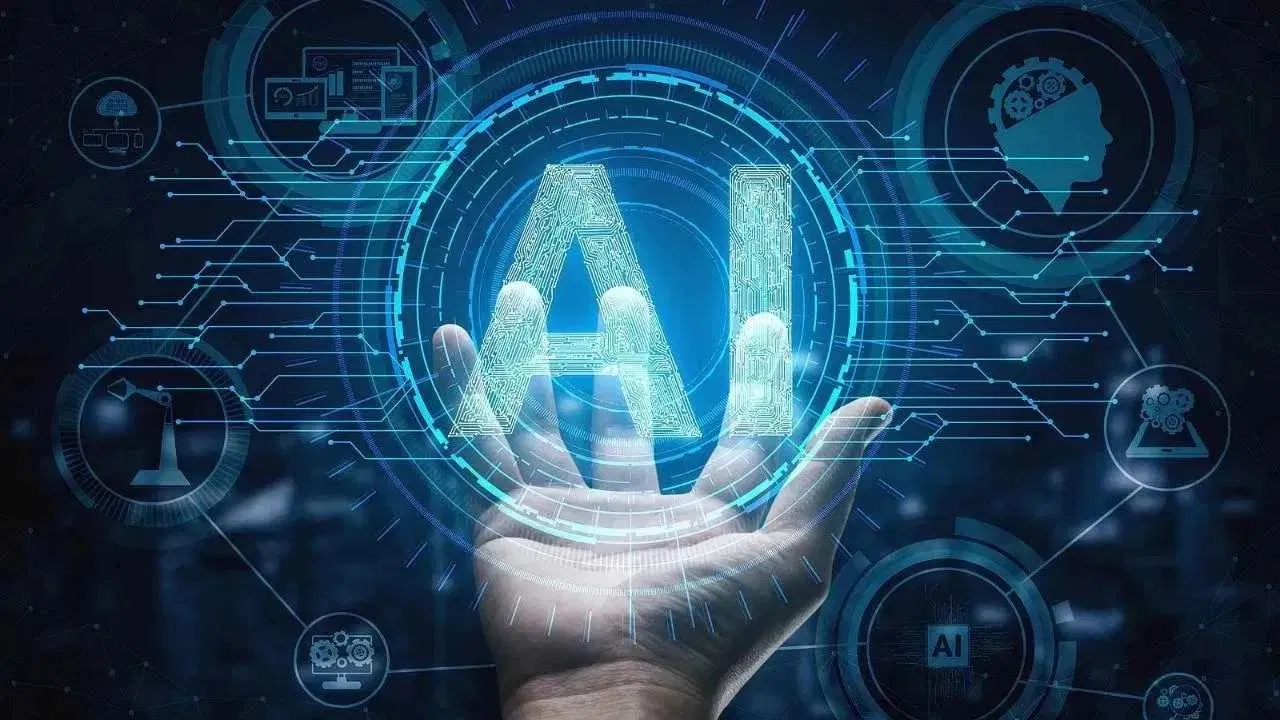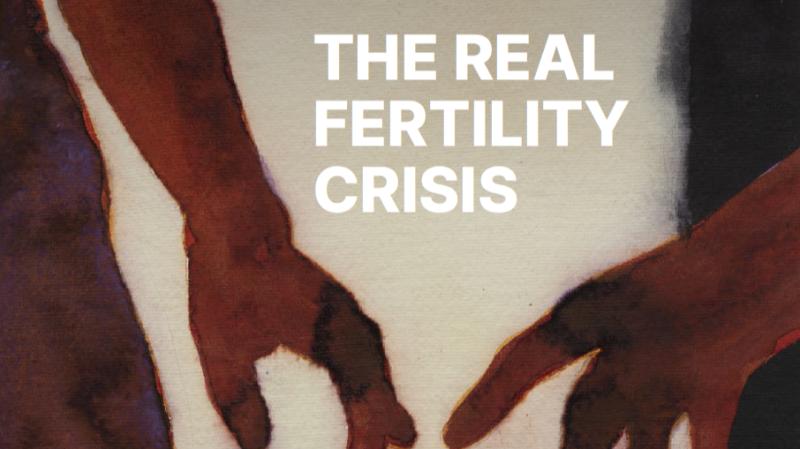- Courses
- GS Full Course 1 Year
- GS Full Course 2 Year
- GS Full Course 3 Year
- GS Full Course Till Selection
- MEP (Mains Enrichment Programme) Data, Facts
- Essay Target – 150+ Marks
- Online Program
- GS Recorded Course
- NCERT- First Ladder
- Polity
- Geography
- Economy
- Ancient, Medieval and Art & Culture AMAC
- Modern India, Post Independence & World History
- Environment
- Governance
- Science & Technology
- International Relations and Internal Security
- Disaster Management
- Ethics
- Current Affairs
- Indian Society and Social Issue
- CSAT
- 5 LAYERED ARJUNA Mentorship
- Public Administration Optional
- ABOUT US
- OUR TOPPERS
- TEST SERIES
- FREE STUDY MATERIAL
- VIDEOS
- CONTACT US
Technology and Innovation Report 2025
Technology and Innovation Report 2025

Introduction
- The Technology and Innovation Report 2025, titled “Inclusive Artificial Intelligence for Development”, was released by the United Nations Conference on Trade and Development (UNCTAD) in March 2025. It highlights the need to make AI more inclusive to support the development goals of the Global South.
- The report introduces the Frontier Technologies Readiness Index, which assesses 170 countries on their preparedness to adopt technologies such as AI, blockchain, and the Internet of Things (IoT). It warns of widening technological divides and calls for global cooperation to align innovation with the Sustainable Development Goals (SDGs).
Key Highlights of the report
- The Frontier Technologies Readiness Index ranks 170 countries based on their capacity to adopt, adapt, and use frontier technologies. The index covers five components:
- ICT deployment
- Skills and human capital
- Research and Development (R&D)
- Industrial capacity
- Access to finance
- United States, Sweden, and the UK lead the 2024 Frontier Technologies Readiness Index with top scores (1.00, 0.97, 0.96 respectively).
- Among the top 10 nations, Singapore (5th) and Republic of Korea (7th) are the only non-Western countries, reflecting advanced AI infrastructure and skills base.
- China (21st), Russia (33rd), India (36th), Brazil (38th), and South Africa (52nd) are the best-performing developing nations on the index.
- AI market value is projected to reach $4.8 trillion by 2033, accounting for 30% of the total frontier technologies market (estimated at $16.4 trillion).
- Private investment in AI remains highly concentrated:
- US: $67 billion (70% of global share)
- China: $7.8 billion
- India: $1.4 billion (10th globally)
- The US and China dominate frontier AI development — together hosting most supercomputers, cloud services, and AI companies.
- Developing countries face wide gaps:
- On average, LDCs’ skills scores are less than half of developing countries and less than one-third of developed countries, reflecting severe disparities in skills readiness for frontier technologies .
- ICT and finance are major weaknesses for most Global South economies.
- BRICS+ nations like China, Brazil, India, and the Philippines outperform expectations based on GDP per capita — India ranked 76 places above its income-based position.
- 100 global companies account for over 40% of R&D investment, most of them headquartered in the US and China. No African or small South Asian economy features in the top 100.
- The AI divide is deepening:
- Access to AI compute and infrastructure remains concentrated.
- Most SMEs in developing countries cannot afford to train their own AI models and must rely on foreign platforms.
Frontier Technologies Readiness Index Rankings (2024)
(UNCTAD Technology and Innovation Report 2025)
|
Country |
Overall Rank (out of 170) |
Remarks |
|
United States |
1st |
Highest global score: 1.00 (Top in ICT, R&D, and finance) |
|
Sweden |
2nd |
Score: 0.97; strong across all five pillars |
|
United Kingdom |
3rd |
Score: 0.96; leading in industrial capacity and digital infrastructure |
|
Singapore |
5th |
Top non-Western country; advanced in AI policy and smart infrastructure |
|
Republic of Korea |
7th |
Strong performance in R&D, skills, and manufacturing |
|
China |
21st |
Leading among developing economies; 2nd in AI investment |
|
Russia |
33rd |
High industrial and technical base |
|
India |
36th |
Strong in R&D (3rd) and industrial capacity (10th) |
|
Brazil |
38th |
High-tech exports and institutional capacity improving |
|
Philippines |
41st |
expanding digital skills base |
|
South Africa |
52nd |
Highest-ranked African economy |
India’s performance
- India ranks 36th out of 170 countries in the Frontier Technologies Readiness Index 2024, improving significantly from 48th in 2022. This marks India as one of the fastest-rising developing nations in terms of technology preparedness.
- India’s scores across the five components of the index are mixed, showing strength in research and industrial capacity, while lagging in ICT and skills:
|
Component |
India’s Rank |
Key Insights |
|
a) ICT deployment |
99th |
Limited broadband access and infrastructure in rural areas |
|
b) Skills and human capital |
113th |
Need for formal AI/data skilling; modest gains in high-skill jobs |
|
c) Research and Development |
3rd |
Strong publication base and institutional research capacity |
|
d) Industrial capacity |
10th |
High-tech manufacturing on the rise |
|
e) Access to finance |
70th |
Growing startup ecosystem; need for deeper innovation funding |
- Although India has a lower per capita income, it ranks 76 positions above where it would be expected to stand, highlighting its growing strength in research, innovation, and technology readiness.
- India also has:
- Over 13 million developers, second globally after the US.
- Strong GitHub activity, including top contributions in Generative AI projects.
- Emerging as a global AI innovation hub, backed by government support.
- India is one of the few developing countries with cloud infrastructure, emerging AI computing capacity, and an expanding base of AI research institutions.
- Key national initiatives are strengthening India’s AI ecosystem:
- IndiaAI Mission (2024): Cabinet-approved programme to build indigenous AI models, scale research, and expand educational outreach, especially in Tier 2 and Tier 3 cities.
- AI Centres of Excellence: Established at IIT Hyderabad, IIT Kharagpur, IISc (with Kotak), and NASSCOM. These centres focus on interdisciplinary AI research in healthcare, agriculture, and urban sustainability.
- Digital India Bhashini Initiative: Provides AI-powered language solutions for all 22 Scheduled Indian languages, enabling inclusive digital access.
- IndiaAI Dataset Platform: Designed to support data-driven AI development by providing quality datasets to developers and startups.
- UNCTAD advises India to:
- Continue building AI and semiconductor infrastructure;
- Improve skilling for frontier technologies;
- Strengthen innovation funding;
- Align AI innovation strategies with the Sustainable Development Goals (SDGs) to ensure inclusive and equitable outcomes.
Challenges and opportunities
1. Global challenges and opportunities
- Global AI investment remains highly concentrated: Just two countries—the US and China—account for over 80% of private AI investment. This leaves developing nations underfunded and dependent on foreign AI infrastructure.
- Technological inequality is widening: A small group of firms in developed countries dominate data, compute, and cloud access. The top 100 firms alone account for 40% of global corporate R&D spending, mostly based in the Global North.
- AI threatens labour stability: Up to 40% of jobs globally are at risk due to automation. The lack of universal reskilling programs raises concerns of worsening inequality and job displacement in low-income economies .
- SMEs and low-income countries face a “compute divide”: Training large-scale AI models requires expensive infrastructure—currently accessible only to a few countries and firms. This could lock out innovation from the Global South.
- Ethical and regulatory concerns are growing: The lack of global standards around AI ethics raises risks of biased algorithms, data misuse, and social inequality. UNCTAD urges governance frameworks that prioritize human rights, sustainability, and transparency.
- Institutional gaps in AI planning: Fewer than one-third of developing countries have adopted national AI strategies, indicating a broader lack of preparedness to govern frontier technologies
2. India-specific challenges
- Weak digital infrastructure: India ranks 99th in ICT deployment, reflecting gaps in internet speed, rural access, and affordability of digital services.
- Severe skills gap in emerging technologies: With a 113th rank in skills, India struggles to provide adequate training in AI, data science, and robotics—particularly in non-metro regions.
- Limited domestic AI investment: India ranks 10th in global AI investment, but its 2023 figure of $1.4 billion lags far behind the US ($67B) and China ($7.8B). Early-stage startups face barriers to funding and computing access.
Way forward
1. Global direction
- Establish global AI governance anchored in equity: UNCTAD calls for a multi-stakeholder AI framework, modelled on ESG principles, to ensure that AI development promotes human rights, fairness, and sustainability.
- Invest in shared AI infrastructure for the Global South: The report urges the creation of global compute and cloud facilities to enable equitable access to AI development resources.
- Strengthen South–South cooperation: Developing countries are encouraged to engage in AI knowledge exchange, talent collaboration, and policy support, reducing overdependence on high-income economies.
- Ensure responsible data ecosystems: Robust, privacy-compliant, and secure data infrastructures are essential for ethical AI training and inclusive algorithm development.
- Adopt a whole-of-government approach: UNCTAD highlights the need for cross-ministerial coordination to align AI policy with national strategies in education, labour, industry, and digital governance.
2. India’s strategic priorities
- Scale sovereign AI and cloud infrastructure: India should accelerate the development of domestic AI compute capacity and public digital platforms to support startups, researchers, and SMEs.
- Decentralize AI skilling and R&D: Expand Centres of Excellence and skilling hubs in Tier-2 and Tier-3 cities to foster inclusive innovation ecosystems.
- Promote open-source, multilingual AI tools: Strengthen platforms like Bhashini and the IndiaAI Dataset Platform to ensure affordable, culturally relevant AI solutions in Indian languages.
- Align AI innovation with SDGs: Prioritize AI deployment in healthcare, agriculture, climate resilience, and education, linking India’s tech strategy to national and global development goals.
Conclusion
- The UNCTAD Technology and Innovation Report 2025 reinforces a critical global imperative: Artificial Intelligence must be shaped as a force for inclusive development, not widening inequality. As frontier technologies redefine economies and societies, both global cooperation and national innovation strategies must align with human-centric values and sustainable goals.
- For India and the Global South, the path forward lies in building sovereign infrastructure, investing in local talent, and scaling open, multilingual, and affordable AI systems. With the right frameworks, frontier technologies can become engines of equity, empowerment, and economic resilience in the decades ahead.
Appendix: About UNCTADThe United Nations Conference on Trade and Development (UNCTAD) is a permanent UN body established in 1964 by the United Nations General Assembly. Headquartered in Geneva, Switzerland, it comprises 195 member states and serves as the UN’s principal body for trade, investment, and development issues affecting the Global South. 1. ObjectivesUNCTAD’s primary goal is to help developing countries integrate more equitably into the global economy. It promotes fair trade, inclusive innovation, and sustainable development. 2. Core Functions
3. Key Contributions
4. Role in Frontier TechnologiesThrough its Technology and Innovation Report, UNCTAD assesses countries’ readiness to adopt AI, blockchain, IoT, and other emerging technologies. It emphasizes inclusive innovation, digital literacy, and equitable access to infrastructure in the Global South. |




